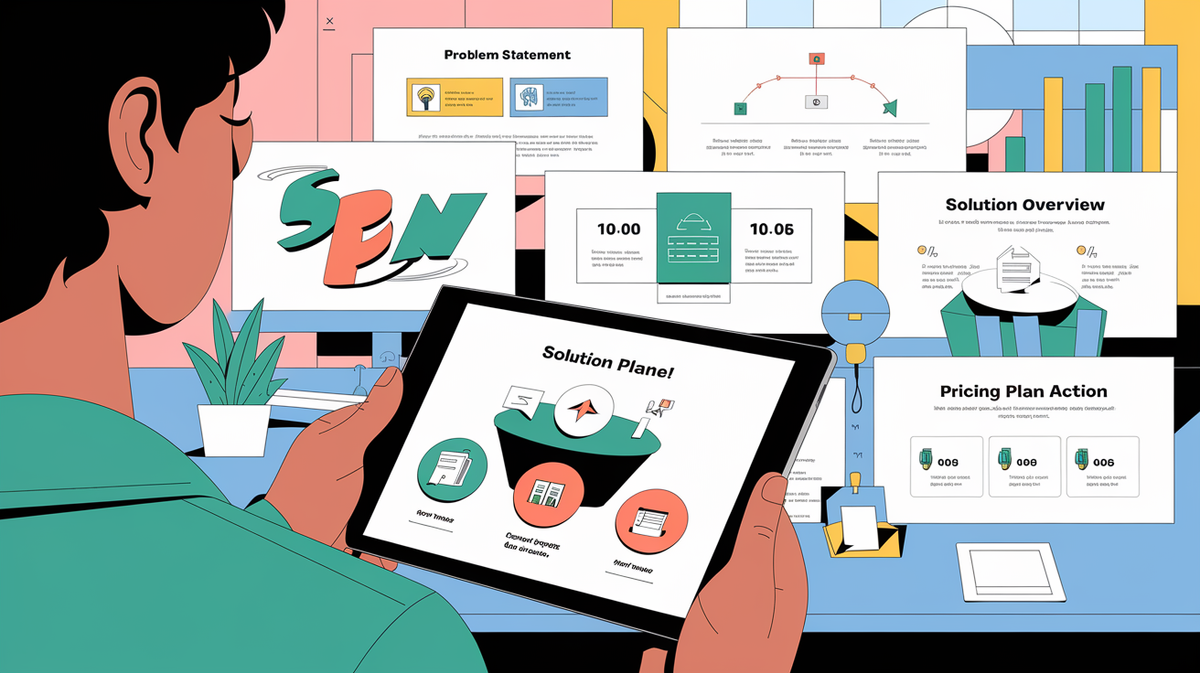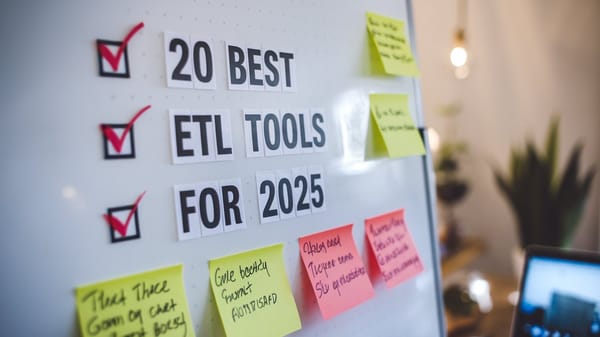How to Create a Perfect B2B SaaS Sales Deck: A Comprehensive Guide

A well-crafted B2B sales deck is an indispensable tool for effectively communicating the value of your software-as-a-service solution. A sales deck is not merely a collection of slides; it is a strategic presentation that serves as a visual roadmap for your sales pitch. It is designed to guide your audience through the key features, benefits, and unique selling points of your SaaS product, ultimately persuading them to take action.
Creating a compelling B2B SaaS sales deck involves a blend of art and science. It requires a deep understanding of your audience, a clear articulation of your value proposition, and the ability to tell a persuasive story. A sales deck should be adaptable to different customer needs, allowing you to tailor your presentation to resonate with specific audiences, whether they are potential clients, investors, or partners.
The importance of a sales deck cannot be overstated. It acts as a powerful tool to make a strong first impression, spark interest, and increase the likelihood of closing deals. Leveraging AI-powered tools can streamline the creation process, enabling you to produce visually captivating slides that effectively communicate your message.
To craft the perfect B2B SaaS sales deck, it is crucial to focus on several key elements. These include understanding your audience's pain points, weaving a compelling narrative, showcasing social proof through case studies and testimonials, and maintaining a concise and visually appealing presentation. Using high-quality visuals and maintaining brand consistency can significantly enhance the impact of your sales deck.
You can also visit Oncely.com to find more Top Trending AI Tools to create a perfect B2B SaaS sales deck. Oncely partners with software developers and companies to present exclusive deals on their products. These deals often provide substantial discounts compared to regular pricing models, making it an attractive platform for individuals and businesses looking to access quality tools and services at more affordable rates.
Some common types of products and services featured on Oncely include a wide range of software tools across various categories, including productivity, marketing, design, development, project management, and more. Examples include project management platforms, SEO tools, social media schedulers, email marketing software, website builders, and graphic design tools.
One unique aspect of Oncely is its “Lifetime Access” feature, where customers can purchase a product once and gain ongoing access to it without any recurring fees. However, it’s important to note that the availability of lifetime access may vary depending on the specific deal and terms offered by the software provider.
Oncely also provides a 60-day money-back guarantee on most purchases, allowing customers to try out the products and services risk-free.
Oncely are hunting for the most fantastic AI & Software lifetime deals like the ones below or their alternatives:

In summary, a successful B2B SaaS sales deck is a carefully structured narrative that not only highlights the unique benefits of your product but also builds trust and guides potential clients through their decision-making process. By following best practices and utilizing advanced tools, you can create a sales deck that stands out in the crowded SaaS market and drives meaningful business outcomes.
Table of Contents
Understanding Your Audience
- Importance of Audience Analysis
- Identifying Ideal Customer Profiles (ICPs)
- Developing Buyer Personas
- Customizing the Presentation
- Addressing Audience Pain Points
- Utilizing Data and Feedback
- Conclusion
Crafting a Compelling Narrative
- The Role of Storytelling in B2B SaaS Sales Decks
- Structuring the Narrative
- Techniques for Engaging the Audience
- Avoiding Common Pitfalls
- Conclusion
Utilizing Visual Storytelling in B2B SaaS Sales Decks
- The Power of Visual Storytelling
- Key Elements of Visual Storytelling
- Techniques for Effective Visual Storytelling
- Examples of Successful Visual Storytelling
- Avoiding Common Pitfalls
- Leveraging Technology for Visual Storytelling
- Conclusion
Importance of Audience Analysis
Understanding your audience is a foundational element in crafting a successful B2B SaaS sales deck. This process involves identifying the specific needs, challenges, and preferences of your potential clients, which allows you to tailor your presentation to resonate with them effectively. Knowing your audience helps in aligning your message with what matters most to them, thereby increasing the chances of engagement and conversion.
Identifying Ideal Customer Profiles (ICPs)
Defining Ideal Customer Profiles (ICPs) is crucial for effective audience targeting. An ICP is a detailed description of a hypothetical customer who would benefit the most from your SaaS solution. This profile includes demographic information such as industry, company size, geographic location, and specific pain points. By segmenting potential clients based on these criteria, you can create a more focused and relevant sales deck. This segmentation allows for tailored messaging that speaks directly to the needs of each segment, enhancing the effectiveness of your sales pitch.
Developing Buyer Personas
In addition to ICPs, developing buyer personas is another strategy to understand your audience better. Buyer personas are semi-fictional characters that represent the different types of customers within your target market. These personas are based on market research and real data about your existing customers. They help in understanding the motivations, goals, and challenges of your audience, allowing you to craft a narrative that addresses their specific needs. Tailoring your content to address the unique pain points of your target audience is vital for the effectiveness of any interactive sales presentation.
Customizing the Presentation
Customization of the sales deck is essential to ensure it resonates with the audience. This involves personalizing the presentation by incorporating elements such as the prospect's logo, brand colors, and references to their specific industry challenges. Personalization helps prospects feel heard and valued, which can significantly enhance the impact of your presentation. By addressing the unique capabilities and team culture of your prospects, you demonstrate a genuine interest in their business, which can foster trust and engagement.
Addressing Audience Pain Points
A critical aspect of understanding your audience is identifying and addressing their pain points. This involves highlighting the specific challenges your SaaS product can resolve and illustrating how your solution can navigate these challenges with precision. Focusing on providing value by clearly stating your unique value proposition and emphasizing benefits over features is key. By using real-world examples, case studies, and visuals, you can illustrate the positive impact of your solution, making it more compelling and relevant to your audience.
Utilizing Data and Feedback
Leveraging data and feedback from previous interactions with clients can provide valuable insights into your audience's preferences and expectations. This information can be used to refine your sales deck and ensure it aligns with the needs of your target market. A well-crafted pitch deck should encompass a problem statement, solution overview, market analysis, and product demonstration, all tailored to the audience's specific concerns. By continuously gathering and analyzing data, you can adapt your presentation to meet the evolving needs of your audience, thereby enhancing its effectiveness.
Conclusion
Understanding your audience is a critical component of creating a successful B2B SaaS sales deck. By identifying ideal customer profiles, developing buyer personas, customizing the presentation, addressing audience pain points, and utilizing data and feedback, you can craft a compelling and relevant sales pitch that resonates with your target market. This approach not only enhances the effectiveness of your communication but also increases the likelihood of a successful B2B partnership.
The Role of Storytelling in B2B SaaS Sales Decks
Crafting a compelling narrative is a critical component of a successful B2B SaaS sales deck. A well-structured story not only captures the audience's attention but also helps in conveying the value proposition of the SaaS product effectively. The narrative should be designed to engage the audience emotionally, making the presentation memorable and persuasive. A compelling story begins with a relatable problem, introduces the SaaS solution as the hero, and illustrates the transformation it brings.
Structuring the Narrative
- Identifying the Core Message: The core message of the sales deck should be clear and concise. It should focus on the unique value proposition of the SaaS product. This involves understanding the key benefits and features that differentiate the product from competitors. The narrative should revolve around this core message, ensuring that every slide contributes to reinforcing it. The presentation should highlight how the product addresses specific pain points and provides tangible solutions.
- Building the Story Arc: A successful narrative follows a structured story arc, which includes the setup, conflict, and resolution. The setup introduces the audience to the current state of affairs, highlighting the challenges and pain points faced by the target market. The conflict presents the SaaS solution as the answer to these challenges, showcasing its features and benefits. Finally, the resolution demonstrates the positive outcomes and transformations achieved by using the product. A transformational narrative to contrast the past and future, emphasizing the need for change.
- Incorporating Social Proof: Social proof is a powerful tool in building credibility and trust. Including case studies, testimonials, and success stories in the narrative can significantly enhance its impact. These elements provide real-world evidence of the product's effectiveness, making the story more relatable and convincing. As highlighted by PitchBob, showcasing social proof helps in building trust with the audience, reinforcing the product's value proposition.
Techniques for Engaging the Audience
- Emotional Engagement: Engaging the audience emotionally is crucial for a compelling narrative. This can be achieved by using relatable scenarios, vivid imagery, and storytelling techniques that resonate with the audience's experiences and aspirations. The goal is to create an emotional connection that makes the audience care about the problem and the solution being presented. The art of storytelling lies in appealing to the audience's emotions, making the presentation more impactful.
- Visual Storytelling: Visual elements play a significant role in enhancing the narrative. Using visuals such as images, infographics, and videos can help in conveying complex information more effectively and keeping the audience engaged. Visual storytelling should complement the verbal narrative, providing a cohesive and immersive experience.
- Interactive Elements: Incorporating interactive elements in the sales deck can further enhance audience engagement. Interactive presentations allow the audience to explore the content at their own pace, making the experience more personalized and engaging. This approach is particularly effective in B2B SaaS sales decks, where the audience may have specific interests and questions. As noted by Storydoc, interactive presentations can simplify complex concepts and make the sales process more efficient.
Avoiding Common Pitfalls
- Overloading with Information: One of the common mistakes in crafting a narrative is overloading the audience with too much information. This can lead to confusion and disengagement. It is important to keep the narrative focused and concise, highlighting only the most relevant and impactful information. Each slide should convey a single idea, supported by visuals and minimal text.
- Lack of Personalization: A generic narrative that does not address the specific needs and interests of the audience is unlikely to be effective. Personalization is key to making the narrative relevant and engaging. This involves tailoring the content to the audience's industry, challenges, and goals.
- Ignoring the Call to Action: A compelling narrative should culminate in a strong call to action (CTA). The CTA should be clear and actionable, guiding the audience on the next steps to take. It is the final opportunity to reinforce the product's value proposition and encourage the audience to take action. The closing slide should summarize the presentation and create a sense of urgency, making it easy for the audience to say 'yes'.
Conclusion
Crafting a compelling narrative is an essential aspect of creating a successful B2B SaaS sales deck. By structuring the narrative effectively, engaging the audience emotionally, and avoiding common pitfalls, businesses can create presentations that resonate with their audience and drive sales. The use of storytelling techniques, visual elements, and personalization can significantly enhance the impact of the sales deck, making it a powerful tool in the B2B SaaS sales process.
The Power of Visual Storytelling
Visual storytelling is a critical component in crafting an effective B2B SaaS sales deck. It leverages the human brain's ability to process visuals 60 times faster than text, making it an essential tool for engaging audiences and conveying complex information succinctly. By integrating visuals with a compelling narrative, sales decks can maintain audience interest and facilitate better decision-making.
Key Elements of Visual Storytelling
- Visual Components: Visual storytelling in sales decks involves the strategic use of images, videos, infographics, and data charts. These elements help transform complex information into clear, engaging, and easy-to-understand visuals. For instance, infographics can simplify data presentation, while videos can demonstrate product functionality in a dynamic and engaging manner.
- Narrative Structure: A well-structured narrative is crucial for effective visual storytelling. It typically follows a three-act structure: beginning, middle, and end. The beginning introduces the hero (often the customer), the middle presents a challenge, and the end shows how the hero overcomes the challenge with the SaaS solution. This structure not only engages the audience but also helps them visualize the solution's impact.
Techniques for Effective Visual Storytelling
- Emotional Engagement: Visual storytelling should appeal to emotions, as emotional responses drive most consumer decisions. By using visuals that evoke emotions, such as customer testimonials or success stories, sales decks can create a stronger connection with the audience.
- Simplifying Complex Information: Visual storytelling excels at simplifying complex information. For example, a workflow slide can visually represent processes step-by-step, making it easier for the audience to follow complex procedures or workflows. This is particularly useful in operational and project-based presentations.
- Maintaining Audience Interest: To maintain audience interest, it's important to use a variety of visual elements and keep the presentation dynamic. Techniques such as scrollytelling, which combines scrolling with storytelling, can enhance engagement by allowing the audience to interact with the content.
Examples of Successful Visual Storytelling
- Gong's Revenue Intelligence Deck: Gong's sales deck is a prime example of effective visual storytelling. It uses direct, simple, and crisp content to explain a complex service—revenue intelligence. The deck includes a video testimonial and impressive client results, all presented with minimal text but loaded with meaning.
- Zuora's Transformational Narrative: Zuora's sales deck is renowned for its transformational narrative, which contrasts the past and future, highlighting the shift from a product economy to a subscription economy. This narrative effectively defines winners who embrace their solution and losers who fail to adapt.
Avoiding Common Pitfalls
- Overloading with Information: One common mistake in sales decks is overloading the audience with too much information, which can lead to confusion and disengagement. It's crucial to keep the message concise and focused on what truly matters.
- Lack of Personalization: Personalization is key to making a sales deck resonate with the audience. This can be achieved by addressing the prospect's target audience, unique capabilities, and team culture, and by including their logo and brand colors.
Leveraging Technology for Visual Storytelling
- Interactive Presentations: Modern sales decks often use interactive presentations, which allow for a more engaging and personalized experience. These presentations can include dynamic variables that populate the deck with specific prospect information, enhancing personalization at scale.
- Multimedia Integration: The integration of multimedia elements, such as videos and animations, can significantly enhance the impact of a sales deck. These elements not only make the presentation more engaging but also help convey deeper insights more effectively.
Conclusion
Incorporating visual storytelling into B2B SaaS sales decks is not just about making presentations visually appealing; it's about creating a narrative that resonates with the audience, simplifies complex information, and drives engagement. By leveraging the power of visuals and a compelling narrative, sales professionals can create more effective and persuasive sales decks that ultimately lead to increased sales success.





